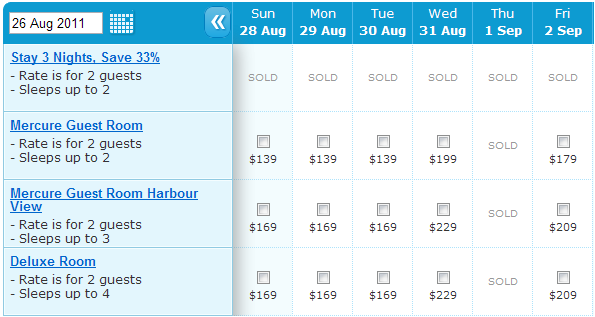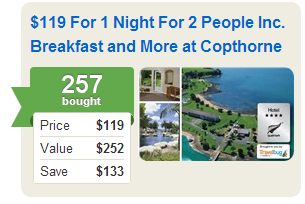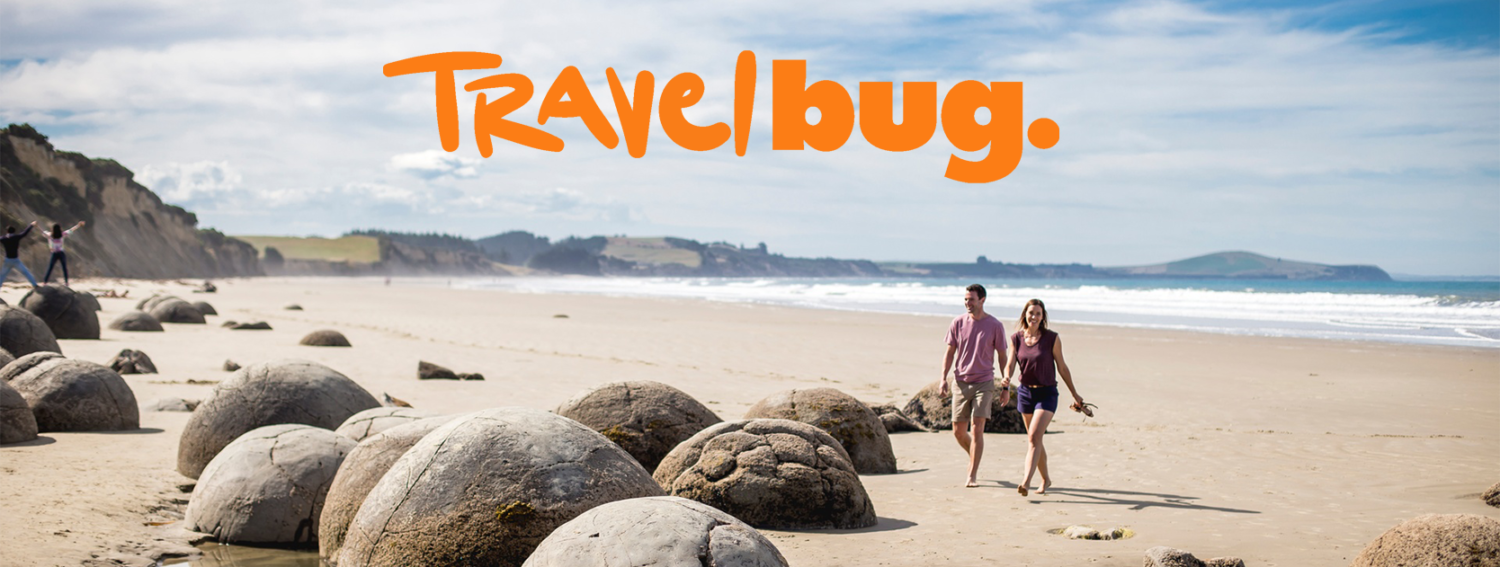Why rack rates can rack off
You’ve seen them I’m sure, rates displayed for accommodation bookings on websites named ‘rack rates’. Everywhere you look these days there’s another daily deals website or online travel agency offering accommodation deals with a hefty discount. 50% is common, 75% is regular and I’ve even seen 90% discounts being touted. In many cases the comparison prices being used are elusive at best and sometimes just plain non-existent.
Before I get stuck in, though, this post isn’t a criticism of accommodation operators that use ‘rack’ or ‘full’ rates. It makes sense that they set a ceiling price for their product, and there are instances in which a rack rate does actually get charged. This blog is a criticism of third party websites, offering a service like Travelbug, that use these full rates to define price comparisons.
At Travelbug, we don’t use ‘full rates’ or ‘rack rates’ to compare sale rates. We think that for accommodation booking websites like us they are misleading and here’s why:
1. Rack rates are edge-case – websites like Travelbug hardly ever sell rooms at true ‘full rates’ or rack rates. There are some isolated instances like key event dates where full rates may be showing, but generally we are getting the ‘best available rate’ or discounted rates anyway.
2. Dynamic pricing – accommodation operators are increasingly using ‘revenue management’ strategies that vary the rate according to demand. So the same room might be $99 tonight because demand is very low, but there’s a concert on tomorrow night so it is $149. This means that it is very hard to pinpoint full rates for the purposes of specials. Here’s an example of a hotel, Mercure Auckland, and how their prices vary by day, even for the same product. In the space of a few days you see 3 prices on this grid, for example for the Guest Room:

3. Price parity across websites means a lot of websites often have the same price so is it right for one website to claim “Book on XYZ.co.nz and save 75% on a double room at Jim’s Hotel” when all other websites have that same price? Maybe, but we prefer to steer away from it in the interests of being as upfront as possible.
So we don’t use rack rates, but what DO we use? On Travelbug we have a few ways of comparing prices:
‘Normally’ rates – used for our Travelbug ‘best deals’ that you’ll see highlighted on operator pages and in search and browse like this Auckland hotel search. These look at the price at that property, for that product, and highlight any rates that are a certain percentage off the ‘normal’ rate bookable over the next 45 days. So the discounted rates compare off real rates that you’d be booking that product at if it weren’t cheaper on the days highlighted.

‘Value’ rates – used for Treat Me deals, these rates are the best price you’ll find anywhere else, on the day of the sale, for the same offer. So if it is a bed + breakfast + internet deal, we’ll look for the best price you might find elsewhere on the web for that same package, and use that as the ‘was’ rate

And then we have our deals emails and our newsletters, where we don’t even state a full rate or a discount percentage. We’ll tell you if there is breakfast included or any other goodies and we may even tell you if it is actually a half-price sale. We’ve tried to find a good honest way of displaying a discounted rate and have been tempted a few times to use rack rates as a comparison point, but we’ve managed to stay strong so far.
This is a hard thing to get right 100% of the time, but we reckon that there are plenty of websites that could be doing it better. Next time you see a deal stating a percentage discount (“save 70%!”, “80% off!) take a closer look and see if you can see where that ‘full rate’ is coming from and make sure they’re not pulling the triple-sheeting over your eyes. Meanwhile, we’ll keep doing our best to keep travellers informed and be as transparent as possible.
Have you spotted something we should know about? Flick us a note to blog@travelbug.co.nz and we’d be glad to hear from you.

It is good to see someone shine a light on this. I trust most people are too savvy these days to take much notice of a listed “full rate”. However, the daily deals sites that use a “full rate” as a basis to determine the advertised % discount are more difficult to detect and, in my opinion, misleading their customers.
Thanks Dan, us Treat Me fellas love the Travelbugs’ work, and we’re happy to have you helping us bring our users such sweet travel deals 🙂 It gives us warm fuzzies that we can be safe in the knowledge that the values we have up on our site are fair and honest.
Yep, it’s tempting to over-state the discount sometimes, but there’s no point, so keep up the good work.
This is very true. Look at GrabOne’s deal today: http://www.graboneescapes.co.nz/quest-albany. It says this is worth $260 but you can book it on the Quest hotel’s website for $170!